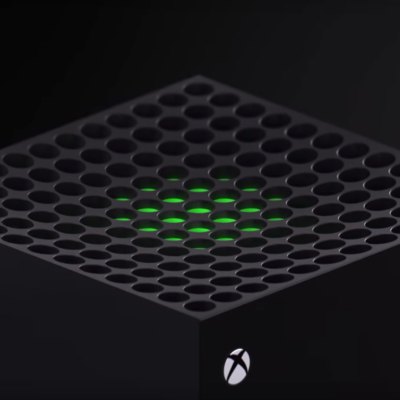How PlayStation 5 and Xbox Series X Will Change the Way We Game
The Xbox Series X and PlayStation 5 will change the way we game in quite a few ways. The gaming industry will never be the same again.

E3 2020’s cancellation has prompted a series of fascinating conversations about what comes next. While a lot of the talk revolves around the future of E3, no conversation at the moment is more fascinating than what will happen to the next generation consoles currently set to release by the end of 2020.
Not only was Microsoft set to fully reveal the Xbox Series X and its lineup of games at E3 2020, but now you’ve got to wonder how the fallout from the global spread of the coronavirus (specifically the economic impact of the health crisis) will impact the release dates of next-gen consoles. But at some point, the PlayStation 5 and Xbox Series X will be on store shelves everywhere, ushering in the next console generation. When that happens, we’re going to find ourselves in the midst of some very different conversations, the most important of which will be “What do next-gen consoles offer that current hardware doesn’t?”
We’ve heard about teraflops and storage drives, but those technical specs don’t necessarily tell us much about the practical ways in which the next generation of gaming is going to change how games look, how they play, and how we interact with the console themselves. While it’s impossible to predict how next-gen consoles will change the games industry as a whole, some of the revolutions that the PS5 and Xbox Series X will bring are already clear.
Here’s how the PS5 and Xbox’s biggest features will change the game.
SSDs Bring the End of Load Times
Solid-state drives are storage devices with no moving parts. They are faster, more reliable, and next-generation consoles will finally adopt them.
Simply put, SSDs may be the biggest single-component upgrade you’ll find in your next-gen console. They fulfill a promise that we’ve been dreaming of since the PlayStation 1 by eliminating (or drastically reducing) load times. Not only does that mean you’ll be able to play games with fewer loading screens, but developers will be able to build more ambitious open-worlds without having to break up the experience so that a slower console can catch up.
A New Era of Exclusives
Exclusive games have long been the biggest bombs in the console wars. Not only are they key when choosing which console to buy, but they offer fans a clean way to say, “Here is something my console can do that yours can’t.”
But it seems the days of true exclusives are at an end. Microsoft has already said that its first-party Xbox Series X titles will also be available on PC and Xbox One for at least the first year. Even Sony is reportedly considering releasing more of its PlayStation exclusives to PC.
In truth, the “death” of exclusive games may never come, but it’s becoming more apparent that Sony and Microsoft are interested in the world beyond their own hardware. At a time when the industry is also starting to explore cross-play and cross-platform compatibility with major titles like Fortnite, you may soon have easier access to the best games regardless of the console in your living room.
3D Audio and True Surround Sound
In 1940, Disney helped pioneer the concept of surround sound with the release of Fantasia. Since then, advances in sound have helped transport millions to other worlds. Yet comparatively few people have experienced the true surround sound offered by 3D audio.
3D audio is surround sound that comes at you from all sides, even above and below you. We know the PS5 features a 3D audio chip, which could mean a dynamic new way to experience video game sound through your speaker system, sound bar, and headphones, giving you the immersive audio experience your built-in TV speakers simply can’t. Imagine playing a stealth game and hearing an enemy’s footsteps directly behind you or a game of FIFA where you feel like you’re surrounded by a roaring crowd.
Ray Tracing Pushes Graphics Forward
Ray tracing allows VFX designers to create life-like lighting, shadows, and reflections that dynamically interact with the rest of a digital environment. It’s a photo-realistic technique that has been at the forefront of video game graphics for the last couple of years but has been utilized by filmmakers for longer than that.
Until now, films and select PC games have been the only showcase for the true power of ray tracing. But with the release of next-gen consoles capable of rendering real-time lighting, gamers are about to experience a whole new level of immersion.
Your Games, Anywhere You Go
Services like Google Stadia, Shadow, and NVIDIA GeForce NOW prove that cloud gaming is no longer a pipe dream. It’s now possible to stream cutting-edge games with minimal hardware and to devices that would otherwise be unable to support them natively. Play your games on any screen, including your mobile device, anywhere and any time through the internet.
The PS5 and Xbox Series X may be the devices that truly bring us into this new age of gaming. While newcomers like Google are still pleading their case for game streaming, Sony and Microsoft are established gaming brands. Those hesitant to the idea of paying a monthly subscription for a cloud gaming service or doing away with physical releases may have an easier time buying in if it comes with an Xbox or PlayStation label. With Xbox preparing to roll out its own xCloud streaming service, the way you play may never be the same again.
Netflix For Gaming
The fabled “Netflix for gaming” dream is one that companies have been chasing for years. The idea is simple: a subscription streaming service that allows users to play games as easily as you watch movies and shows on Netflix. It’s a great idea that’s so far been hindered by technological limitations.
But this could all be about to change. Xbox Game Pass is fairly close to offering a true “Netflix for gaming” experience (although you still have to download games instead of streaming them). For a monthly price, the service gives you access to a rotating library of more than 100 new and classic titles. With Sony turning its own PlayStation Now subscription program into something more closely resembling Game Pass but with streaming, it seems that we are closer to the age of “Netflix for gaming” than ever before.
At a time when disposable incomes are stretched thin over a bountiful world of entertainment options, such services could allow gamers to experience more titles at a lower price point and grant developers new ways to give their visions a shot at success.

